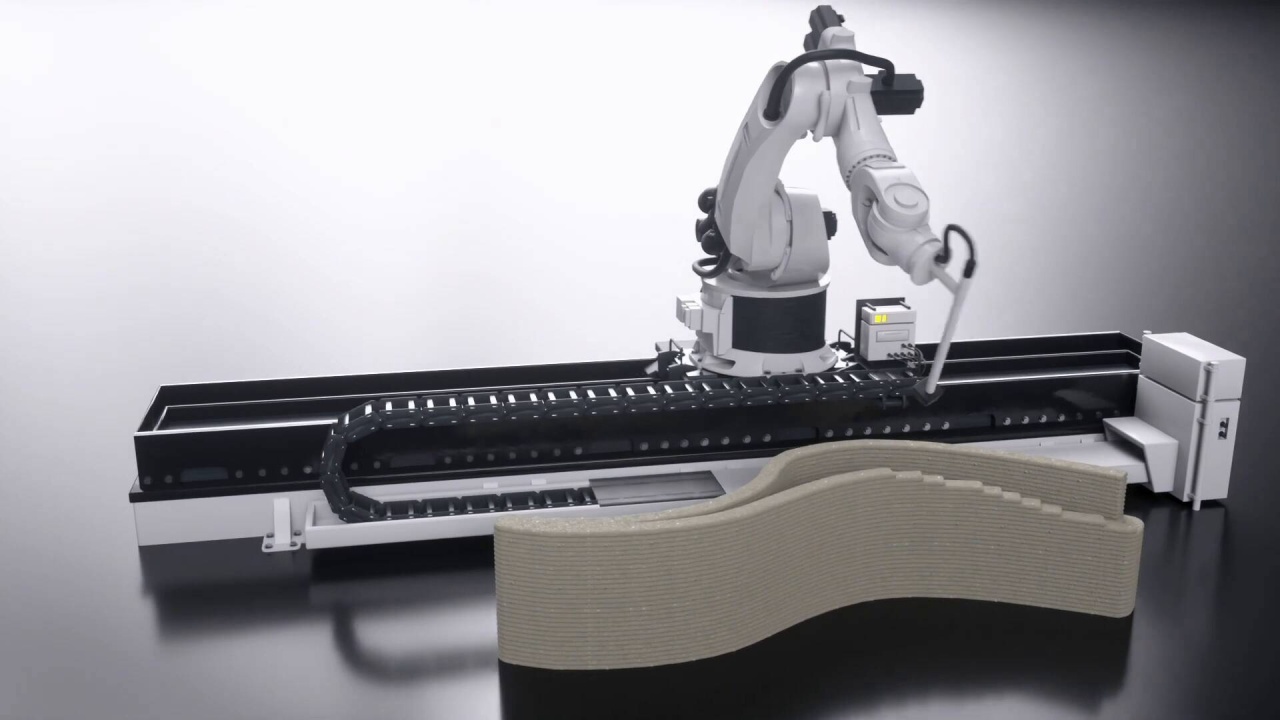Help us improve your experience. See content that is made for you!
See how IBM increased their efficiency by up to 30%!

Help us improve your experience. See content that is made for you!
See how IBM increased their efficiency by up to 30%!


Royal BAM Group nv (BAM) and materials company Saint-Gobain Weber Beamix (Saint-Gobain) have joined forces to set up Europe’s first industrial and commercial 3D printing factory for concrete elements.
It all started in 2017, when BAM and Saint-Gobain partnered to 3D print a bridge out of concrete. The advantage of 3D concrete printing is that it allows design freedom with intricate, organic shapes, which are difficult to manufacture using conventional formwork. The process utilizes generative design techniques to develop complex shapes, challenging for a human to design, but within the capabilities of a robot to produce, resulting in material savings of 40%.
“The nice thing about this partnership is it opened our eyes to what you can achieve with this technology,” says Jeroen Nuijten, Innovation Manager at Royal BAM Group. “We don't have enough skilled people, the cost of labor is increasing, and we have huge sustainability and climate change issues. Our partnership with Saint-Gobain is alleviating these issues with scalable and sustainable solutions.”
In 2019, BAM and Saint-Gobain opened a factory, recently securing, and now under construction, the longest 3D-printed bridge in the world; a 28 meter organically formed structure for the city of Nijmegen in The Netherlands. The facility has a pipeline of work that includes four bicycle bridges ordered by the province of North Holland and five printed concrete houses for the Milestone project.
“3D concrete printing enables you to make any shape. You can bend it, you can make angles, you can make virtually any organic shape you want to, and it's a one-to-one copy to what you designed on paper,” says Marco Vonk, Marketing Manager at Saint-Gobain Weber Beamix. “You save about 60% of the time on the jobsite and 80% in labor.”
BAM and Saint-Gobain are not limiting their activities to printing concrete structures at the new factory. They are also researching the best concrete mixes for printing, and the ideal printer settings. There are many parameters that can be set, such as the speed of the print head, the size of the nozzle, and the thickness of each layer.
Watch how BAM and Saint-Gobain are changing the future of infrastructure with sustainable, scalable, and affordable 3D concrete printing solutions.

[Video Transcript]
Jeroen Nuijten, Innovation Manager at Royal BAM Group: The Royal BAM Group is a 150-year-old company that’s very passionate about enhancing people's lives. Technology helps us to be much more efficient, have less footprint for customers and that is a big strategy for us to keep learning and evolving.
The construction industry is changing so much. We don't have enough skilled people, the cost of labor is increasing everywhere in the world. You have huge sustainability and climate change issues. It's very important for the construction industry to take technology and implement it.
The partnership with Autodesk and BAM is important because they can help us with implementing the best technologies in our processes. We're looking into creating parametric designs that can be 3D printed in very different shapes.
In 2017, we decided we wanted to print a bridge and Saint-Gobain was one of the key partners that helped us succeed in that.
Marco Vonk, Marketing Manager at Saint-Gobain Weber Beamix: Saint-Gobain is one of the oldest construction material producers in the world.
3D concrete printing enables you to make any shape. You can bend it, you can make angles, you can make virtually any organic shape you want to, and it's a one-to-one copy to what you designed on paper.
You save about 60% of time on the jobsite and you save 80% in labor. And at the same time you prevent a lot of waste because you don't have to throw away your formwork.
Once you have to parametric model, you only have to change the parameters, and as long as you stay within the parametric model, you guarantee that the bridge you're making is falling within the restrictions. So, you don't need all this extra work.
Based on this parametric model, we could make and create, let's say 1,400 unique bridges based on one model, which cuts down the cost for the community enormously because normally you would have to make, test, draw a design every bit separately.
At the moment, we are in the scaling process of this technology. The nice thing about the way this is set up, a robot is always the same robot software is always the same software, and the mortar is always the same mortar. So basically the building blocks are the same if I put it in Holland or if I take it to America.
If you have solutions to build something without any extra costs, you have a very powerful technology at your hands.

May we collect and use your data?
Learn more about the Third Party Services we use and our Privacy Statement.May we collect and use your data to tailor your experience?
Explore the benefits of a customized experience by managing your privacy settings for this site or visit our Privacy Statement to learn more about your options.